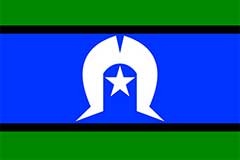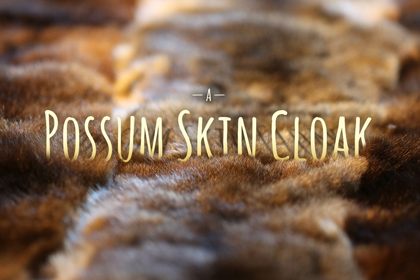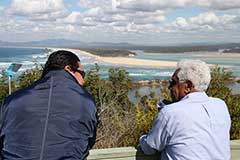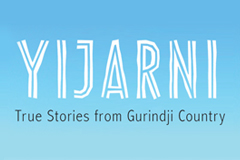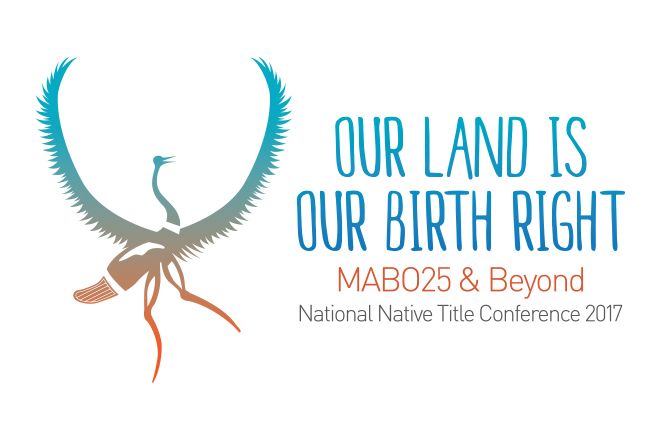
Portraits speak of real people and relationships which have been and remain present. They are about lineage and descent; memory and remembrance. The abiding histories of a place and its people are told through them.
Tasmania (1) - Fenton
Kings and Queens
A series of 12 lithographic portraits of elders from the Album of Kings and Queens of Victoria, Melbourne [ca.1890]. The works are based on photographs of Fredrick Kruger who, in 1877 was commissioned by the Victorian Protection Board of Aborigines to produce a series of portraits of the Aboriginal residents of Corranderrk and Healsville. Selections from this series were later collated as souvenir versions of the original photographs.
Salvado
John Dirimera (age 10) and Francis Conaci (age 6) of the New Norcia mission, WA, travelled with the Benedictine priest Rosendo Salvado to Europe in 1849 to be educated for the priesthood. Unfortunately John died in Rome shortly after his arrival and Francis after his return to the mission in 1855. The engraved plate is from Salvado's memoirs I [1851].
See:
- The Salvado Memoirs / translated and edited by E.J. Stormon (1977)
- Green, N J. Broken Spears. (1984)
Threlkeld
The only known portrait of Biraban (John McGill) an Awabakal man from the Newcastle region, NSW and from 1825 the chief assistant to the missionary and linguist L.E. Threlkeld. With Biraban's invaluable assistance Threlkeld was able to publish the first systematic studies of Aboriginal language. The portrait appears in the frontispiece of Threlkeld's A Key to the Structure of the Aboriginal Language Sydney [1850] published eight years after Biraban's death in 1846.
See: Australian reminiscences & papers of L.E. Threlkeld, missionary to the Aborigines, 1824-1859 / edited by Niel Gunson (1974).
Dawson
Two photographic portraits from the frontispiece of James Dawson's Australian Aborigines, Melbourne [1881].
Kaawirn Kuunawarn, elder of the Giraiwurung people of south-western Victoria was born in the Mount Shadwell region in 1822-3. From the 1840's he worked for James Dawson on his property until 1865 when he moved to Framlingham, where he died in 1890.
Little is known of Yarrun Parpur Tarneen who was probably an elder of the Jardwadjali people of the Marnoo region central western Victoria in the 1870's.
See: Critchett, Jan. A 'distant Field of Murder' : Western District Frontiers 1834-1848. (1990).
A Portrait Oxley
Portrait by the renowned colonial artist John Lewin of a 'Native Chief at Bathurst', NSW appears in John Oxley's Journals of two expeditions into the interior of New South Wales, undertaken by order of the British Government in the years 1817-18 London [1820]. The portrait is closely related to an earlier work by Lewin of Yango Mungo Y'eyango (Bathurst Plains), one of the Wiradjuri people met by Oxley and Lewin on the first official crossing of the Blue Mountains in 1815.
See:
- R.A.J. Neville A Rage For Curiosity (1997)
- The Dictionary of Australian artists : Painters, Sketchers, Photographers and Engravers to 1870 / edited by Joan Kerr (1992).
Tasmania (2) – Roth
Portraits of the surviving members of the Oyster Cove community, 1866. The work of Hobart photographer Charles A. Woolley, the photographs were taken for the Melbourne Intercolonial Exhibition. Originally published as engravings in Bonwick's The Last of the Tasmanians [1870] the photographs here later appeared in Ling Roth's The Aborigines of Tasmania. 2nd ed. Halifax [1899].
William Lanne was captured with his family in 1842 and taken to the Aboriginal compound at Flinders Island. He was one of the 46 people removed to Oyster Cove in 1847, but was sent to the Orphan School in Hobart until 1851. Lanne worked for Mary Ann and Walter George Arthur at their farm for a short time and in 1855 joined a whaling ship. Although Lanne died a tragic death in March 1868, he was not allowed to rest in peace, as his body was dismembered and used for scientific purposes.
Little is known about the life of the woman Patty (Goneannah/Cuneennar), who was listed under the name Noemineerdrick in Robinson's Census of the Captured Aborigines 1832-1836. She was probably a member of the group captured in 1834 and removed to Flinders Island.
Panger-no-widedic (Bessy Clark) was a Ninene woman, whose homeland was near Port Davey. When she was nine years old, she was captured at Lowgernoun (Little Rocky River) with her parents, her older sister Pyterruner and eight others. Her father, Cordwanne, was a leader of the Ninene.
Wapperty, (Wobberrertee), a Trawlwoolway woman, was a daughter of Mannalargenna, a respected leader. Some time in the 1820s, she was abducted by the sealer, John Thomas who took her to the Hunter Islands in Bass Strait.
All three women were taken to Flinders Island. When the Wybalenna complex there was closed, they were returned to Tasmania where they died at Oyster Cove in 1867.
See:
- N.J.B. Plomley Weep in Silence (1987)
- The Dictionary of Australian artists : Painters, Sketchers, Photographers and Engravers to 1870 / edited by Joan Kerr (1992).
